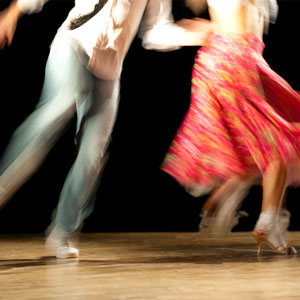

The dance was propelled to wide visibility after it was featured in movies such as Swing Kids in 1993 and in the “Kakhis Swing” television commercials for GAP in 1998. In the mid-to-late 1990s the popularity of neo swing music of the swing revival stimulated mainstream interest in the dance. In the mid-to-late 1990s ‘ and A Day at the Races and by contacting dancers such as Frankie Manning, Al Minns, Norma Miller, Jewel McGowan and Dean Collins. In the 1980s, American and European dancers from California, New York, Sweden and London went about “reviving” Lindy hop using archival films such as Hellzapoppin’ and A Day at the Races and by contacting dancers such as Frankie Manning, Al Minns, Norma Miller, Jewel McGowan and Dean Collins. The concept of a Lindy exchange, a gathering of Lindy hop dancers in one city for several days to dance with visitors and locals, enables different communities to share their ideas with others. Local swing dance communities in each city and country feature different local cultures. Lindy hop tends to be concentrated in small local scenes in cities in each of these countries, although regional, national, and international dance events bring dancers from many of these scenes together. There was renewed interest in the dance in the 1980s from American, Swedish, and British dancers and the Lindy hop is now represented by dancers and loosely affiliated grass-roots organizations in North America, South America, Europe, Asia, and Oceania.

In this step’s open position, each dancer is generally connected hand-to-hand In its development, the Lindy hop combined elements of both partnered and solo dancing by using the movements and improvisation of black dances along with the formal eight-count structure of European partner dances – most clearly illustrated in the Lindy’s basic step, the swingout. In the eighth season of the US version of Dancing with the Stars, it was added to the list of dances along with the Charleston The 2009 Strictly Come Dancing final the Lindy hop was performed by the two remaining contestants. In each, partners may dance alone or together, with improvisation a central part of social dancing and many performance and competition Lindy hop today is danced as a social dance, as a competitive dance, as a performance dance, and in classes, workshops, and camps. It was very popular during the Swing era of the late 1930s and early 1940s. It is said that good Lindy Hop dancing is a perfect balance between structure and freedom.Is an American dance that evolved in Harlem, New York City, in the 1920s and 1930s and originally evolved with the jazz music of that time. Both lead and follow constantly communicate with each other through connection, movement, timing, harmony, and musicality. Although Lindy Hop is a partnered dance it offers a lot of room for individual expression within the partnership. Lindy Hop is mostly danced to swing, blues, and jazz music, but is not limited to these styles. Depending on the music, Lindy Hop can be fast and energetic or smooth and groovy. Unlike most ballroom dances, where the dancers float or glide on the floor, Lindy Hop is danced “into the floor” – it uses a “pulse” that drives and connects the dancers. It is mostly characterized by a breakaway move, known as the “Swing-Out”, where the lead sends the follow out of closed position and allows both of them to improvise solo steps. Still, the dance does have a structure with some basic steps, patterns and moves, which serve as the basis for innovation. The core of Lindy Hop is improvisation – you play, you improvise, you syncopate.

In the 1980’s it was given new life as young dancers connected with and learned from the original dancers. Over the years the dance evolved into different forms and styles in different regions of the country.

The name “Lindy Hop” was inspired by Charles Lindbergh’s trans-Atlantic solo airplane hop in 1927. Born on the streets of Harlem and associated with the Savoy Ballroom in the late 1920s, the Lindy Hop is known as the original swing dance and would probably be best described as “partnered jazz dancing”.


 0 kommentar(er)
0 kommentar(er)
